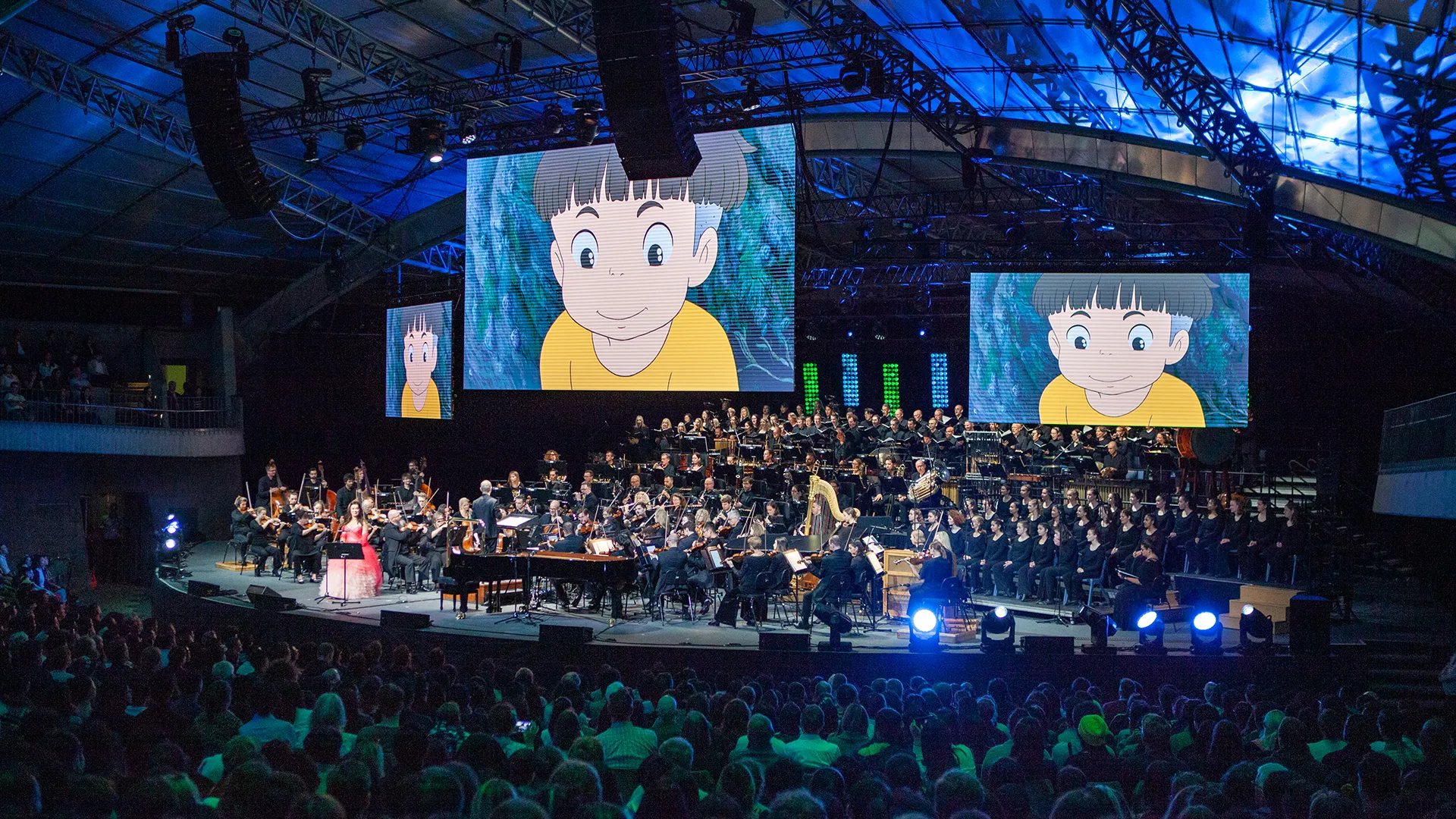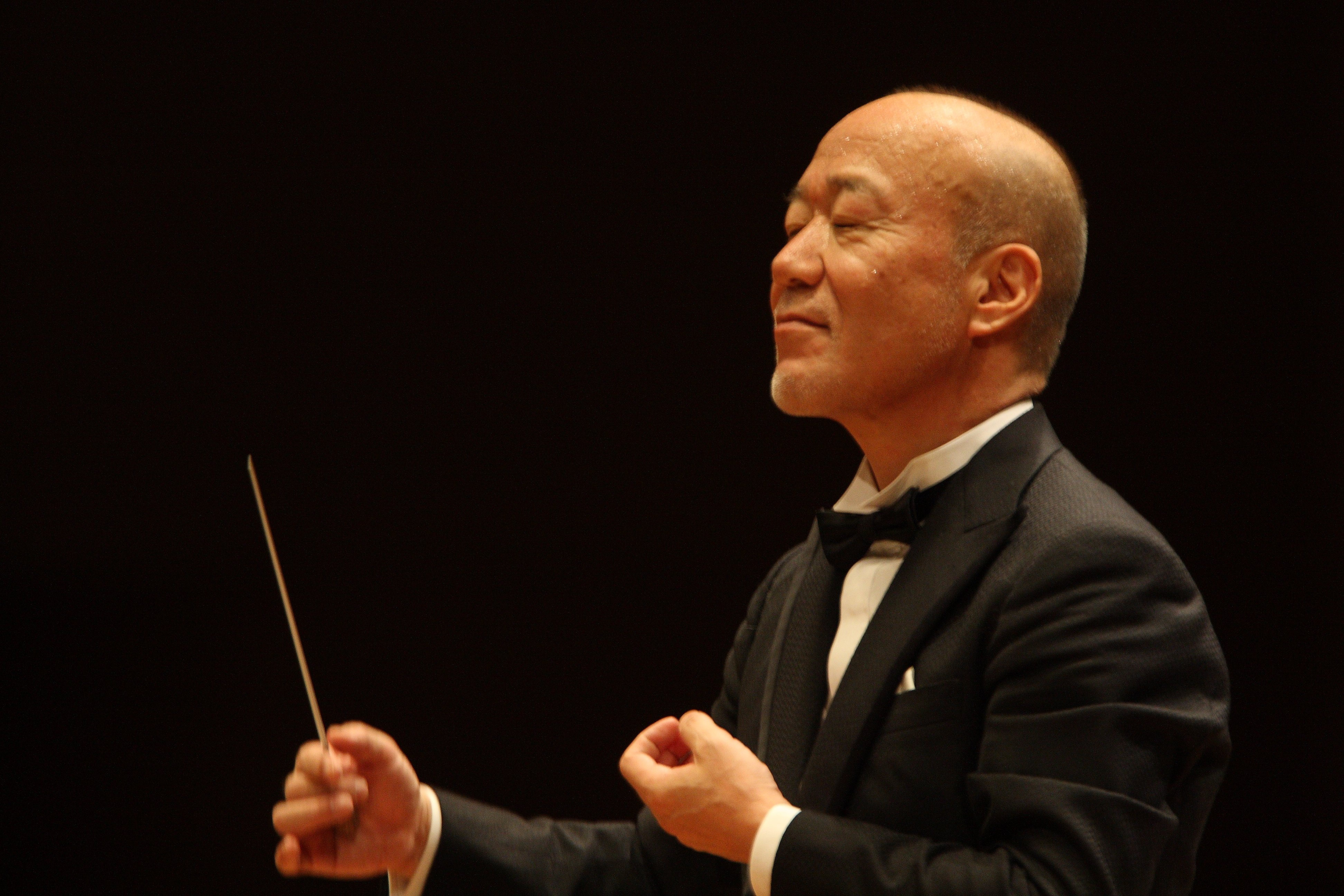I love the music of Studio Ghibli. Actually, I think that “love” is an understatement. Joe Hisaishi, the composer and longtime collaborator of Studio Ghibli director Hayao Miyazaki, was the number two most streamed artist of my 2023 Spotify Wrapped. As a student, I worked on my problem sets with “Ghibli Winter Jazz” and “Ghibli Piano Medley” on YouTube in the background, playing them on repeat until I had them memorized. If you picked a random song from a Ghibli score, I’m fairly certain that I could tell you which movie it came from — and I might even be able to tell you its name.
Needless to say, watching the San Francisco Symphony play two hours of Ghibli music under Joe Hisaishi’s own baton was a dream come true.
The first thing I noticed when I arrived at Davies Symphony Hall was how lively it felt. The lobby was filled with young people — a far cry from the stereotypical image of symphony goers as middle-aged retirees. Parents were taking photos of their kids in front of a poster depicting iconic Studio Ghibli characters, and concert attendees were lining up to buy something called the “Prince of a Neighboring Kingdom Botanical Lemonade” (regrettably, I did not get a chance to try it, though it looked delicious). Looking around, I couldn’t help but feel like this was exactly how the symphony hall should be: a gathering place for all kinds of people to come together and enjoy the beautiful gift of live music.
Raucous applause marked Hisaishi’s well-awaited entrance onto the stage. As he began to conduct the orchestra, it became immediately clear that Hisaishi was not a flashy person. His beat patterns were straightforward; he lacked the flair for the dramatic displayed by so many superstar conductors. When he pulled double duty as the piano soloist, his playing was understated and simple.
What was not simple, however, was his composition, which the warm and inviting sound of the San Francisco Symphony allowed to come alive. I have listened to so much Ghibli music over the years, but I found myself amazed by the complexities in the music that don’t come across in a recording. Jazz-inspired drums in the “Kiki’s Delivery Service” medley, for instance, or the use of the celesta, a piano-like instrument with a twinkling sound, in the music of “My Neighbor Totoro.”

The concert opened with music from “Nausicaä of the Valley of the Wind,” Hisaishi’s first collaboration with Studio Ghibli’s Hayao Miyazaki. Scenes from the movie flashed across a large screen, interspersed with occasional cuts to live footage of orchestra and chorus members playing a feature or singing a solo. I quite appreciated these little features, as I felt that they highlighted the human element behind the music (something that is a little too easy to forget).
Next on the program was music from “Kiki’s Delivery Service,” which began with resonant, cheerful pizzicato and immediately brought a smile to my face. This medley also featured a lengthy violin solo, played expertly by concertmaster Alexander Barantschik. The first half continued with music from Princess Mononoke, room-shaking percussion in “The Demon God,” a beautifully haunting solo from soprano soloist Janet Todd, and the mandolin-forward music of “The Wind Rises.” It concluded with music from “Ponyo,” which actually made me giggle. How could I not, when the very serious and accomplished musicians of the San Francisco Symphony Chorus were earnestly singing, “Ponyo, Ponyo, Ponyo, fishy in the sea?”
The second half of the concert featured a duet between Hisaishi, on piano, and his daughter, vocalist Mai Fujisawa, in a performance of “One Summer’s Day” from “Spirited Away.” It was easily the most emotional performance I heard from Hisaishi all evening. Music from “My Neighbor Totoro” closed out the program, with an exuberant rendition of “Hey Let’s Go” in which musicians of each section stood up (like they were going for a stroll) when it was time for their feature.
And clearly, even after two hours, the audience wasn’t ready for Hisaishi to leave. Several minutes of standing ovation brought him out for one encore (“Madness” from “Porco Rosso”) and then another (“Ashitaka and San,” a personal favorite of mine, from “Princess Mononoke”). Countless curtain calls followed, until, finally, the house lights were turned on to stop the applause.
During the final encore, a message from Hisaishi was displayed on the screen: “I am so grateful to be here with you. We are back together again. To my fellow music lovers, I wish you all the health and happiness in the world. We are back together again, sharing music with each other, and I am grateful.”
I cannot express how much that sentiment means to me, as a musician, but also as a music enthusiast. After a difficult few years for classical music, live performance is a precious gift, and it’s events like these that ensures it keeps on giving.
Editor’s Note: This article is a review and includes subjective thoughts, opinions and critiques.
